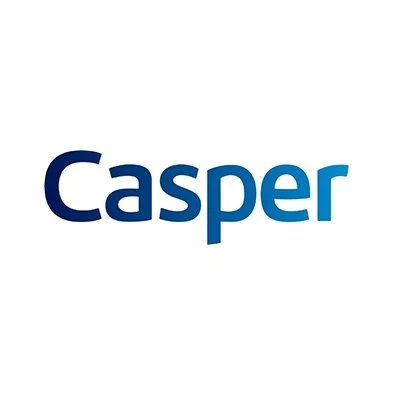It’s quite a challenge to put a price tag on something that you created with blood, sweat, and tears and feel is invaluable. It should compensate for your efforts, but also be affordable and accessible to people who genuinely want to improve themselves.
How much should you charge for it in the UK? It’s a classic creator’s dilemma, isn’t it?
If the price is too high, you might scare off potential students; too low, you risk devaluing your work, as well as depleting your bank balance.
We’ll help you navigate pricing for online courses in the UK in this guide. You may intuitively have some ideas on how to price your online course. However, a comprehensive and structured approach, from calculating your baseline costs to choosing a pricing strategy, will remove the guesswork.
Before You Pick a Price, Calculate Your Costs
First, you need to understand that pricing is a data-driven decision that ensures your efforts are sustainable and, dare we say, profitable!
Calculate Your Break-even Point
Every successful venture, including selling online courses in the UK, starts with a solid financial foundation. Your goal here is to cover your expenses first, then build in your desired profit margin.
Tally Up Your One-Off Development Costs
These investments are what you make upfront to bring your course to life.
- Your Hourly Rate: Often overlooked, the time you spend creating the course is utterly crucial. How many hours did you spend planning, filming, editing, and writing? Multiply that by your desired hourly rate in pounds sterling (£).
- Equipment & Software Costs: Did you invest in a decent camera, a crisp microphone, or professional editing software?
- Outsourced Assets & Workforce: Any custom design work, professional video editing, or outsourced content creation should be accounted for.
Include Your Recurring Costs
While some recurring costs, such as monthly fees for your platform provider, can be stable, others may depend on your sales strategy and overall sales performance.
- Platform Fees: Your subscription to an eLearning platform provider in the UK, such as Vedubox, is a key ongoing cost. Look for platforms that offer value without hefty transaction fees.
- Marketing & Advertising: The budget for promoting your course, whether through social media ads or email marketing tools.
- Payment Processing Fees: While often a small percentage, these add up over time.
Feeling overwhelmed by the numbers? Use our free [Interactive Course Pricing Calculator] to do the heavy lifting for you and find your baseline price in minutes.
How to Analyze the Market
Once you know your costs, it’s time to peek over the garden fence to understand the market’s perceived value for topics similar to yours.
Sizing Up the Competition: What Are Others Charging?
Analyzing your competitors helps you position your course effectively. It reveals what students are willing to pay and what they expect in return. This insight is invaluable for developing a robust online course pricing model.
Where to Look
You’ll want to cast your net as wide as possible. Still, keeping it focused on the local landscape might be a good idea, whether on a countrywide or citywide scale.
- Online Course Platforms: For entry-level pricing, you can collect data on platforms like Udemy and Skillshare. These platforms usually provide lower-priced, mass-market courses.
- Independent UK Creators: Google is your best friend. Searching for “[your topic] course UK” on Google — or a search engine of your preference — will reveal higher price points and niché value offers from solopreneurs and smaller businesses.
- UK Professional Bodies or Training Providers: For more advanced or certified courses, these organizations often set the benchmark for premium pricing.
What Analyze
Don’t just check the topics and corresponding price tags. Review the course contents and compare them with your own.
- Price Points: What’s the general range? Are there significant outliers?
- Value Proposition: What do students get for that price? How many hours of video, downloadable resources, community access, live Q&As, or certifications are included?
- Positioning: Are they positioning themselves as a budget-friendly option, a mid-range solution, or a premium, bespoke program promising significant transformation?
Navigating VAT on Digital Courses
Ah, VAT. It’s a truly British consideration that can often cause a bit of a head-scratcher. Getting this right is crucial when you sell courses online in the UK.
A Very British Consideration: Understanding VAT
This section provides immense value for anyone selling online courses in the UK. Understanding VAT on online courses will help you in two ways. First, it will save you from legal headaches. Second, you will have a clearer understanding of your profit margin.
What is VAT and Does it Apply to You?
Value Added Tax (VAT) is a consumption tax applied to most goods and services in the UK. Online courses are generally considered ‘digital services.’
- You must consider the current UK VAT registration threshold. As of the time of writing, if your VAT taxable turnover exceeds £90,000 in a 12-month period, you must register for VAT.
- If you’re below this threshold, you don’t charge VAT on your courses. If you’re over it, you must register with HMRC and charge the standard rate (currently 20%) on your sales.
Pricing Inclusively vs. Exclusively of VAT
How you display your prices can impact customer perception and compliance.
- B2C (Business-to-Consumer): For individual learners, it’s generally best to display prices including VAT — no nasty surprises!
- B2B (Business-to-Business): If your primary audience is other businesses, you might show prices plus VAT, as businesses can often reclaim the VAT paid.
Please note: This is for informational purposes only. VAT rules can be complex and are subject to change. We strongly recommend consulting with a UK-based accountant for personalized advice. You can find official guidance on the gov.uk website.
Popular Online Course Pricing Models
With your costs covered and competitor analysis complete, it’s time to craft your course pricing strategy.
Choosing Your Course Pricing Strategy
The right online course pricing model can significantly impact both your sales and the perceived value of your offerings. Consider what best suits your course, brand, and target audience.
Premium Pricing (£500+)
- Who it’s for: Courses offering significant transformation, direct access to the expert, bespoke support, or professional certification. UK buyers seeking quality, exclusivity, and a guaranteed return on investment usually prefer these types of options.
- Example: A comprehensive ‘Business Scale-Up Mastermind’ with 1-on-1 coaching sessions.
Value-Based Pricing (Variable)
- Who it’s for: Courses with a clear, demonstrable return on investment (ROI). You frame the price in terms of the outcome or benefit the student receives.
- Example: “Pay £299 to learn a skill that can add £10k to your annual salary within six months.”
Tiered Pricing (e.g., £99 / £199 / £299)
- Who it’s for: Most creators can benefit from this model. Offer different levels of access and support to cater to various budgets and needs.
- Example: A ‘Basic’ (self-study), ‘Standard’ (with community access and Q&A), and ‘Premium’ (with 1-on-1 coaching) tier. This psychological model works incredibly well in the UK, giving buyers choice and often nudging them to the middle option.
Subscription/Membership (£15 - £50 per month)
- Who it’s for: Creators with a continuous stream of content, regular updates, or an active community. This model generates predictable, recurring revenue — a dream for many online courses in the UK.
- Example: A monthly membership for ongoing professional development in a specific industry, with new lessons and resources added each month.
Psychological Tactics and Platform Choice
You’ve done the hard work; now it’s time to present your price with confidence and make it irresistible to your UK audience.
Presenting Your Price with Confidence
Minor tweaks in how you present your price can make a big difference to your conversion rates.
Psychological Pricing Tips
These proven tactics can subtly influence purchasing decisions.
- Charm Pricing: Instead of £100, try £97 or £99. It makes the price feel significantly lower and is a widely accepted practice.
- Payment Plans: Offering the option to pay installments via integrations like Klarna, PayPal Credit, or Stripe is a huge converter in the UK market. Many students prefer to spread the cost over time.
- Bundles: Increase your average order value by bundling related courses or adding bonus resources. “Buy Course A and get Course B for half price!”
The Right Platform to Sell Your Course
Implementing these sophisticated online course pricing model strategies requires a platform that’s both powerful and flexible. Manually managing tiers, payment plans, and bundles is an administrative nightmare — and frankly, a waste of your valuable time.
Vedubox’s all-in-one system includes a built-in eCommerce module, allowing you to seamlessly set up various pricing models, integrate with popular payment gateways like Stripe, and sell your courses directly from your own branded site.
By following this comprehensive framework, you can set a price that accurately reflects your course’s value, meets your business goals, and most importantly, resonates powerfully with your target audience. It’s about confidence, clarity, and ultimately, conversion.
Ring us if you have further questions or to schedule a free consultation and demo.




















